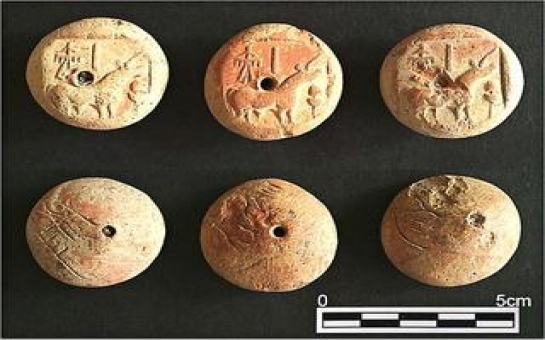Follow us !
Researchers help unravel mystery of the Indus civilization
Society
20:20 | 25.12.2013

Researchers help unravel mystery of the Indus civilization
A five-year study by a Japanese research team could change the accepted view of the ancient Indus Valley civilization. The study found that thousands of years ago, several cities in the Indus Valley, in what is today Pakistan and India, created a trade network that became a multicultural, multilingual civilization, and not a society founded on centralized authoritarian rule as previously believed. Many characteristics of this ancient civilization can be seen today in societies of southern Asia, and these links between the ancient and the modern are arousing researchers' interest. The fresh image of the Indus civilization is being painted by a team of researchers led by Professor Emeritus Toshiki Osada of the Research Institute for Humanity and Nature, which is based in Kyoto. The results of five years of research, known as the Indus Project, were published in October by the Kyoto University Press as "Indus: Exploring the Fundamental World of South Asia" and "The Riddle of the Indus Civilization," both compiled by Osada. The Japanese-led research team consisted of around 40 researchers from various countries. Two Indus civilization sites in India were excavated for the first time by a Japanese expedition. The team focused on changes to the ancient environment. Osada's conclusion from the research has been that "different regional communities created a loose network through trade."Desert came first?Two of the more well-known ruins of the Indus civilization are Harappa and Mohenjo-daro, both in Pakistan. Currently, most researchers focus on the ruins of five major urban centers: the two famous sites; Pakistan's Ganeriwala, which is in a desert; India's Dholavira, which is on an island in a marsh; and Rakhigarhi, also in India. The common view is that the desert sites used to have rivers other than the Indus flowing nearby. Researchers, led by Hideaki Maemoku, a physical geography expert and professor at Japan's Hosei University, examined the area around the desert ruins with a dating method based on mineral crystals. They learned that sand dunes in the area were shaped by a great river long before the Indus civilization existed. The conclusion is that the cities were built on these dunes only after the river was long gone. At Dholavira, artifacts have been found that suggest thriving maritime trade. The most likely candidates for this trade are the ancient societies in Mesopotamia, which could have been reached via the Arabian Sea. The Indus Project used computers to plot changes to the coastline over the centuries to figure out where ancient shorelines would have been. Geological features were also studied and changes in terrain were estimated. All of this found that sea levels were around 2 meters higher and the coastline was much deeper inland. This suggests that many of the ruins in the area were along the ancient shoreline and that this part of the Indus civilization was dependent on the ocean.Ancient passportsExcavations were also made at the Kanmer ruins not far from Dholavira. The most notable find was of three round pendants of baked clay. Each has a hole in its center and the impression of an animal resembling a unicorn. The reverse sides have different Indus script on them. Because the same animal seal was pressed into each of them, Osada speculates that "they may have served as a passport for those traveling between different regions." The research has also tried to find out when and why the Indus civilization declined. When changes in the distribution of ruins are traced using what is called a geographic information system, ruins start to concentrate in northern India at the decline of the civilization. Tezukayama University professor Takao Uno, an expert in archaeological geographical information systems, points out: "Perhaps they abandoned cities and migrated in order to avoid changes in the environment. As a result, the role of various elements of the cities that supported their network may have waned, leading to the decline of cities." Other researchers are taking note of the Indus Project. "These results were produced using the latest technology in the natural sciences," said Yoshihiro Nishiaki, a professor at the University of Tokyo's University Museum and an expert in West Asian archaeology. "It is very interesting that the Indus civilization could have links to present-day South Asian societies. This will shape how we see this civilization." European and U.S. researchers are also eager to learn more about the Indus civilization. Indus script has yet to be deciphered, which means there is much more to learn.(http://asia.nikkei.com/)ANN.Az










